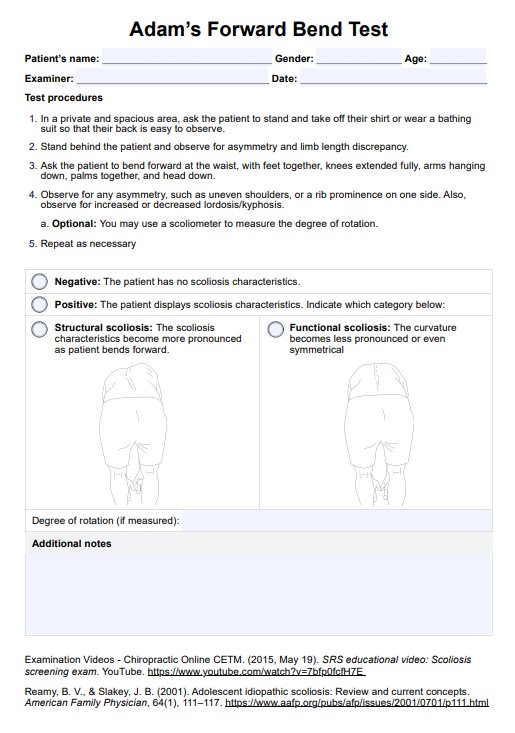The Adams Forward Bend Test is a physical screening tool that detects scoliosis by identifying noticeable symptoms such as asymmetry in the spine or rib prominence when a patient bends forward. It helps differentiate between functional and structural scoliosis and is commonly used in school screenings and routine check-ups.

Adams Forward Bend Test
Make screening for functional and structural scoliosis quick and easy, with our free printable Adam's Forward Bend Test template.
Adams Forward Bend Test Template
Commonly asked questions
The forward bend test alone is insufficient for scoliosis diagnosis due to its high chance of false-negative results and the fact that you cannot make a formal scoliosis diagnosis without Cobb angle measurements at 10 degrees or more. The Adam's Forward Bend Test is most effective when combined with other assessments, such as a scoliometer. Studies show that the test has a sensitivity of 0.83 and a specificity of 0.99 among patients with scoliosis curves exceeding 40 degrees.
A positive Adams Forward Bend Test occurs when the patient displays noticeable postural changes, such as a rib hump or uneven shoulders, indicating potential scoliosis. If the curvature remains prominent during forward bending, it suggests structural scoliosis, while reduced or symmetrical curvature upon bending suggests functional scoliosis.
EHR and practice management software
Get started for free
*No credit card required
Free
$0/usd
Unlimited clients
Telehealth
1GB of storage
Client portal text
Automated billing and online payments











